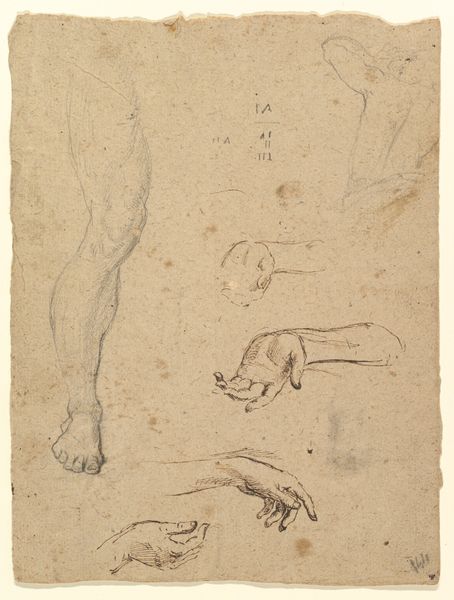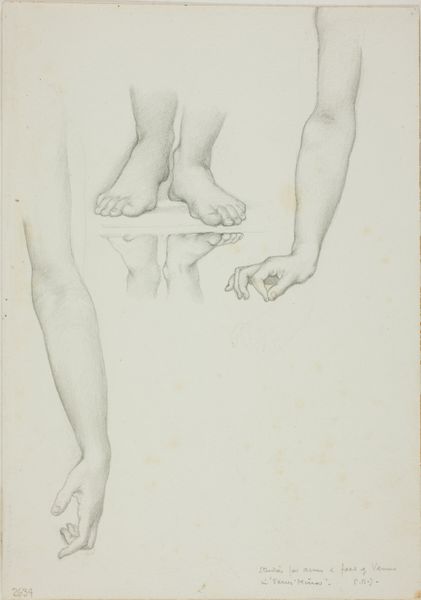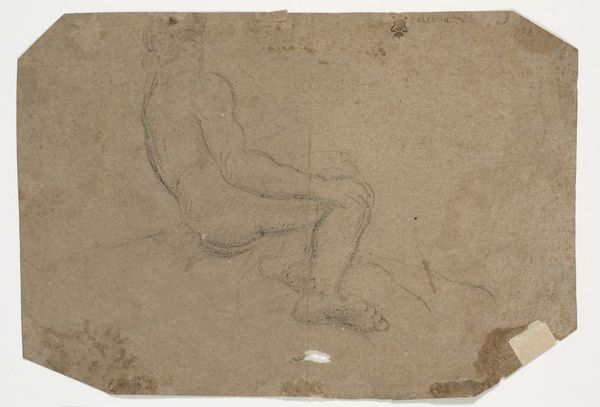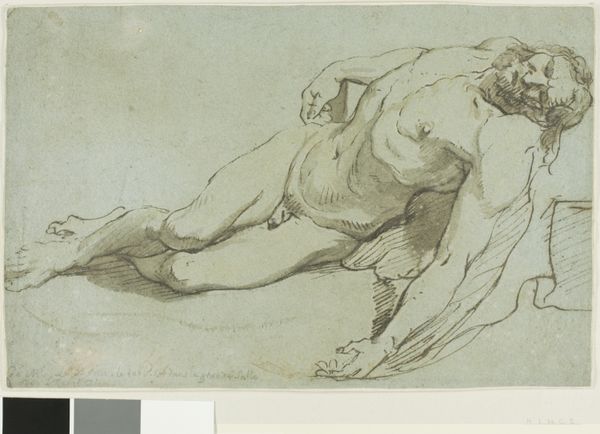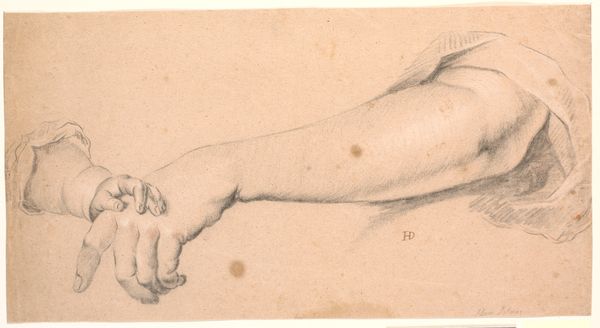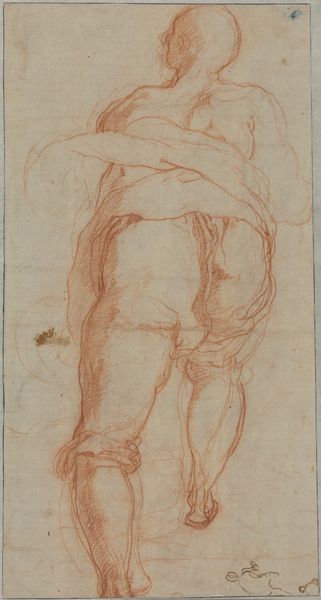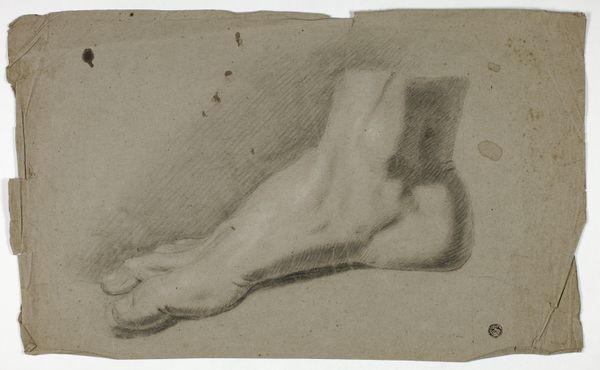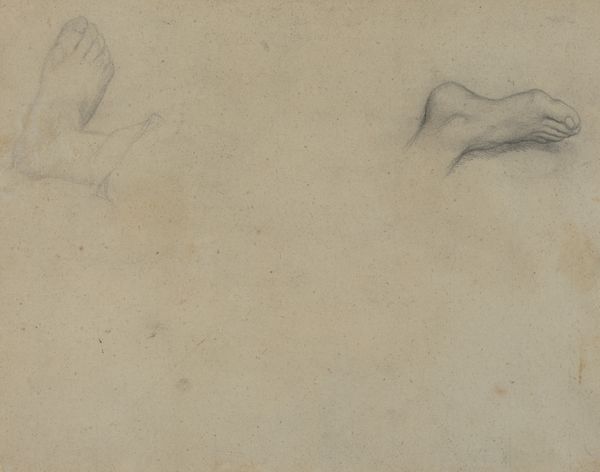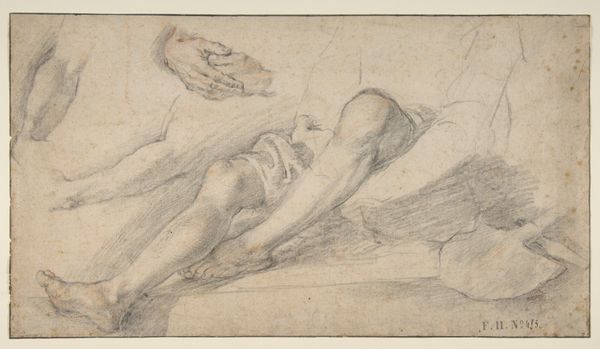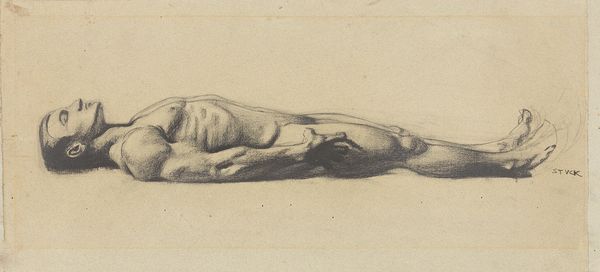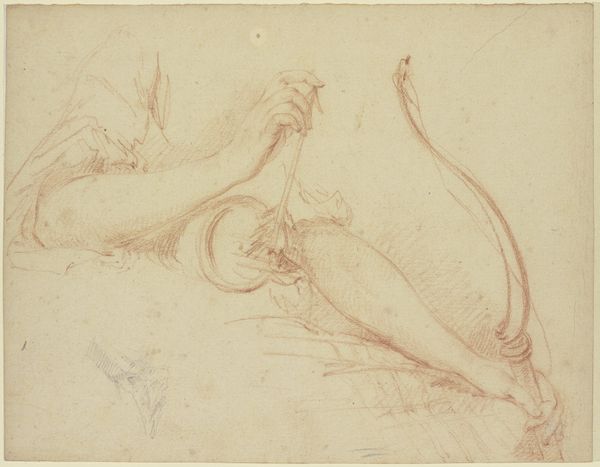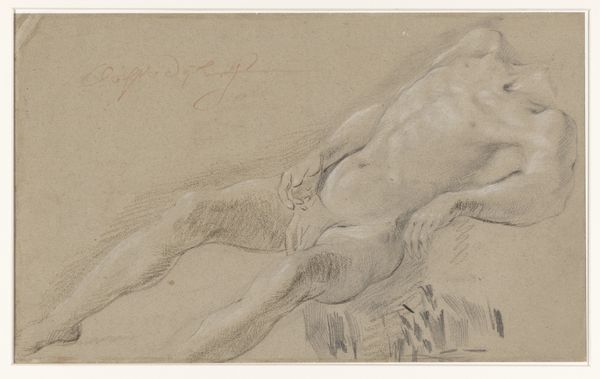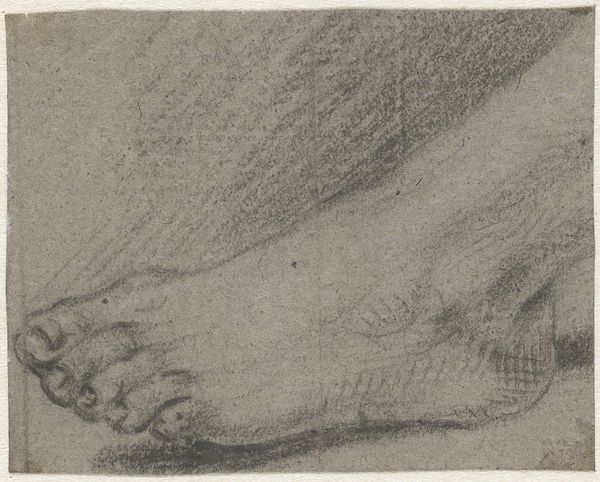
drawing, dry-media, pencil, charcoal, pastel
#
portrait
#
drawing
#
pencil sketch
#
charcoal drawing
#
form
#
dry-media
#
pencil
#
line
#
charcoal
#
pastel
#
academic-art
#
realism
Dimensions: height 179 mm, width 242 mm
Copyright: Rijks Museum: Open Domain
Editor: So, this drawing at the Rijksmuseum, titled "Part of a figure study, legs and an arm" by Pieter George Westenberg, from sometime between 1801 and 1873, is rendered in what looks like pencil, charcoal, and maybe some pastel. I am curious; what do you see when you look at the piece? Curator: This fragment immediately draws my attention to the labor involved. The hatching, the repeated strokes... it reveals the artist's process. Are we meant to see this merely as a sketch for a larger, grander work? Or is the drawing itself the point, highlighting the artist's mastery over these readily available materials – charcoal, pencil, paper? What societal factors contributed to his access of such media? Editor: That is interesting – I did not immediately think about the labor as a factor but you make an excellent point. In many ways this work makes one reflect on form. It appears that Westenberg might have been testing ways of capturing the shape and weight of human forms... Curator: Exactly. The focus on these fragmented body parts—legs, an arm—shifts our gaze. Are these idealized forms, fitting into academic standards of beauty, or rather studies of bodies encountered in everyday life? Consider too, what kind of labour went into producing this paper and these pencils. Were these precious materials, rationed somehow? Or were they considered to be more 'commonplace' and ordinary? This matters, to understand if this "sketch" had different meanings then or now... Editor: I did not really consider that either – but if this sketch did have another purpose – did these body parts have symbolic importance? Curator: Not necessarily symbolic. Maybe Westenberg challenges our modern definitions of art by creating the kind of drawing traditionally viewed as just an educational preliminary project, elevating craft as the ultimate aim, which is not “less than” the supposed higher level of art. Editor: That makes me think differently about these older works. Perhaps we should be reflecting on what exactly artists consider to be important. Curator: Indeed. By centering material and artistic work, we get another viewpoint that is perhaps much richer.
Comments
No comments
Be the first to comment and join the conversation on the ultimate creative platform.
